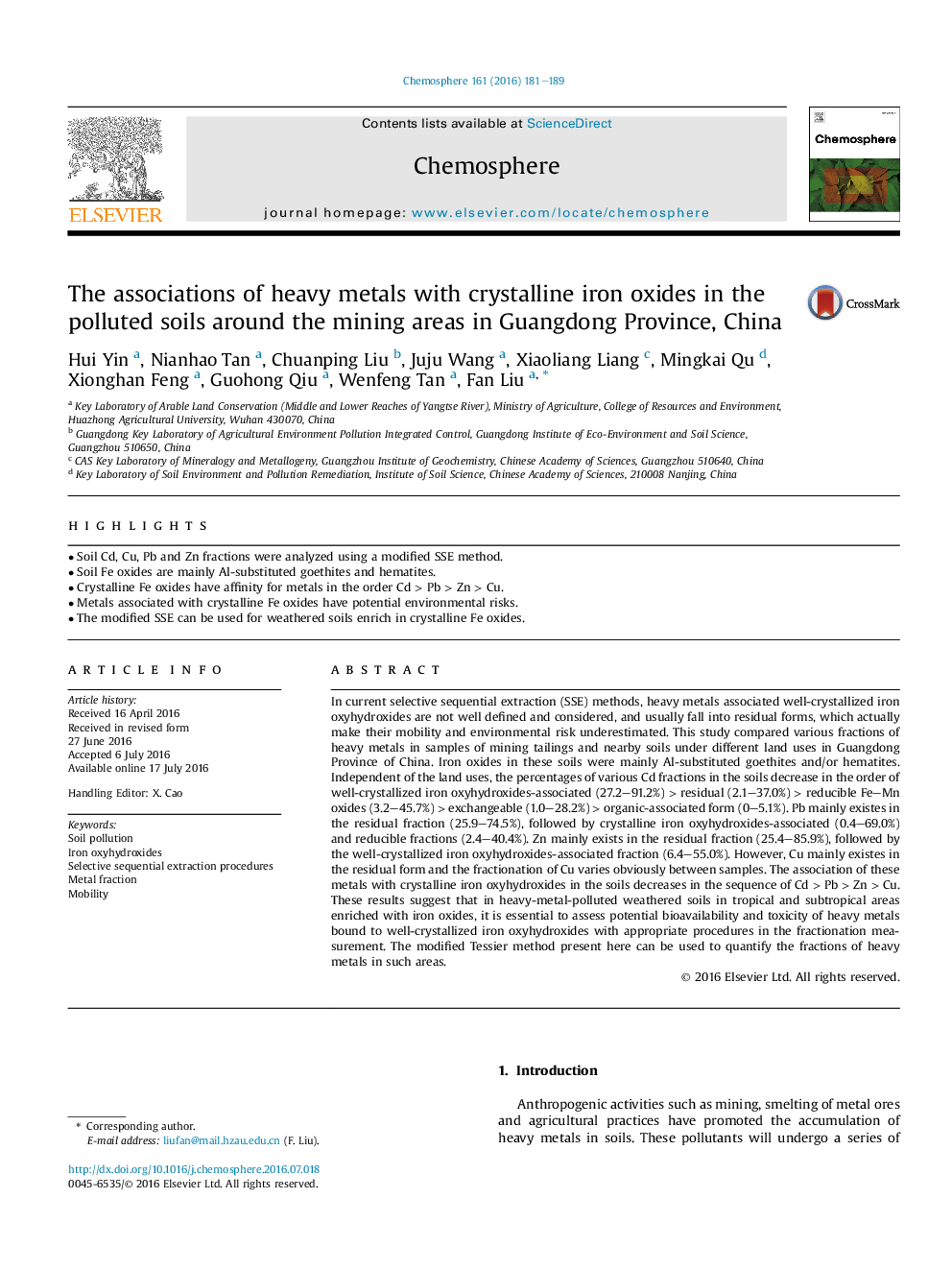| Article ID | Journal | Published Year | Pages | File Type |
|---|---|---|---|---|
| 6306529 | Chemosphere | 2016 | 9 Pages |
Abstract
In current selective sequential extraction (SSE) methods, heavy metals associated well-crystallized iron oxyhydroxides are not well defined and considered, and usually fall into residual forms, which actually make their mobility and environmental risk underestimated. This study compared various fractions of heavy metals in samples of mining tailings and nearby soils under different land uses in Guangdong Province of China. Iron oxides in these soils were mainly Al-substituted goethites and/or hematites. Independent of the land uses, the percentages of various Cd fractions in the soils decrease in the order of well-crystallized iron oxyhydroxides-associated (27.2-91.2%) > residual (2.1-37.0%) > reducible FeMn oxides (3.2-45.7%) > exchangeable (1.0-28.2%) > organic-associated form (0-5.1%). Pb mainly existes in the residual fraction (25.9-74.5%), followed by crystalline iron oxyhydroxides-associated (0.4-69.0%) and reducible fractions (2.4-40.4%). Zn mainly exists in the residual fraction (25.4-85.9%), followed by the well-crystallized iron oxyhydroxides-associated fraction (6.4-55.0%). However, Cu mainly existes in the residual form and the fractionation of Cu varies obviously between samples. The association of these metals with crystalline iron oxyhydroxides in the soils decreases in the sequence of Cd > Pb > Zn > Cu. These results suggest that in heavy-metal-polluted weathered soils in tropical and subtropical areas enriched with iron oxides, it is essential to assess potential bioavailability and toxicity of heavy metals bound to well-crystallized iron oxyhydroxides with appropriate procedures in the fractionation measurement. The modified Tessier method present here can be used to quantify the fractions of heavy metals in such areas.
Related Topics
Life Sciences
Environmental Science
Environmental Chemistry
Authors
Hui Yin, Nianhao Tan, Chuanping Liu, Juju Wang, Xiaoliang Liang, Mingkai Qu, Xionghan Feng, Guohong Qiu, Wenfeng Tan, Fan Liu,
